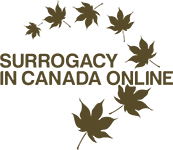This list includes everything you may need to prepare for bringing your baby home!
Diapering
- Changing Pads
- Washcloths
- Diapers & Wipes
Most babies will go through 7-20 diapers per day. Not all hospitals will supply diapers so it’s best to pack at least 5 days worth. Your first diapers will be newborn to size 1.
- Diaper Rash Cream/Ointment
Not all babies develop diaper rash, but the treatment is good to have on hand.
- Baby Powder
Baby powder can help prevent rash/chafing on the diaper area although caution should be used to not allow your baby to inhale this product. There are also cornstarch based baby powders but these should be temporarily discontinued if your baby develops a yeast rash (yeast feed on the cornstarch). As your baby gets older powder can be beneficial to prevent yeast rash in the folds of their skin from sweating/drooling (such as the arms/neck/legs etc.)
Feeding
- Burp Cloths
Your baby will need to be burped after every feeding, it’s best to put a burp cloth/receiving blanket over your shoulder or arm in case your baby spits up.
- Bibs
- Bottles/Nipples/Breast Pump
- Breastfeeding/Breastmilk
It is best for your baby to receive breastmilk (especially colostrum). Breastmilk is not only specifically designed for a baby’s digestive tract but also provides antibodies and other health benefits. Some intended mothers will induce lactation to provide breastmilk to their babies, this needs to be initiated during the pregnancy. If all parties are open to it, your surrogate mother can also provide breastmilk by pumping. Another option is to use donor breastmilk.
- Formula
There are a variety of different types of formula available and sometimes you may need to switch formulas if your baby is sensitive. Most hospitals will start your baby on Enfamil.
- Pacifiers
Some babies can be soothed with rocking and cuddling and are content to suck only during feedings. Others just can’t seem to suckle enough, even when they’re not hungry. If your baby still wants to suck after feeding, a pacifier may be just the thing!
- Bottle Warmer
- Nursing Pillow
- High Chair
- Bottle Drying Rack/Cleaning Brush
- Baby Food Processor
- Portable High Chair
Nursery Furniture & Bedding
- Crib
- Bassinet/Cradle
- Dresser and/or changing table
- Crib Mattress
- Crib Mattress Protector Sheet/Pad (2)
- Crib Sheets
- Comforter/Sleep Sack
- Blankets/Swaddling
- Night Light
- Rocking Chair/Nursing Chair + Ottoman
Clothing
- Infant Sleepers & Gowns
Gowns offer easy access to diapers for changing. Most newborns will wear size 0-3month clothing. Be prepared to go through multiple outfits per day.
- Onesies
Onesies under your baby’s clothes help to keep your baby warm and also keep the diaper secure.
- Socks/Booties
- Receiving Blankets
For swaddling/burping.
- Baby Mitts
Many babies will scratch at their face and cause injuries (especially to their eyes). Baby mitts can help prevent this. (Some outfits come with mitts built into the sleeves).
- Hat
Newborns can have difficulty maintaining their temperature so it’s best to keep their head covered.
- Bunting Bag/Snowsuit
for colder months.
- Zip-up Sweatshirts
- Coats/Sweaters
- Sun Hat
- Baby Safe Laundry Detergent
Most detergents are not designed for a baby’s delicate skin and can cause itching/rashes.
Bath Time
- Hair Brush/Comb
- Nail Clippers
- Baby Shampoo/Wash
- Moisturizing Lotion
- Baby Bathtub
- Non-slip bath mat
- Wash Cloths/Hooded Towels
- Bath Toys
Baby Gear
- Car Seat & Adapter
You will need to bring your car seat to the hospital when your baby is discharged (they will not let you leave without it).
- Car Seat Cover
Helps to keep your baby protected from wind/cold weather.
- Stroller
- Baby Carrier/Sling
- Diaper Bag
- Bottle Warmer
- Bouncer
- Swing
- Baby Monitor
- Electrical Outlet Covers
- Baby Gates
- Cabinet Locks
- Travel Crib
- Convertible Car Seat
- Sun Shade
for car window
Medical
- Bulb Syringe
for suctioning mucous
- Digital Baby Thermometer
- Eye Dropper
- Medicine Spoon/Syringe
- Medication
in case of fever
- Saline Drops
- Vitamin D Drops
- First Aid Kit
Toys
- Rattles
- Baby Books
- Baby Music
- Mobiles
- Teethers
- Activity Gym
- Stuffed Animals
- Balls
- Floor Mat/Blanket


